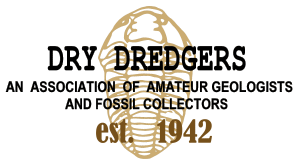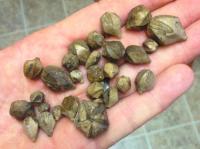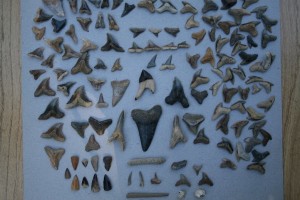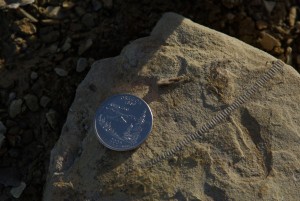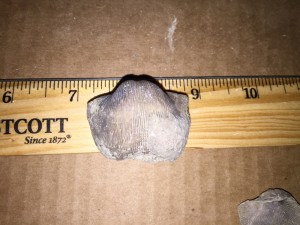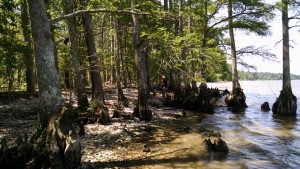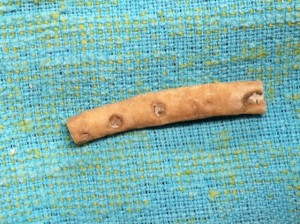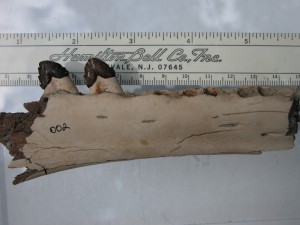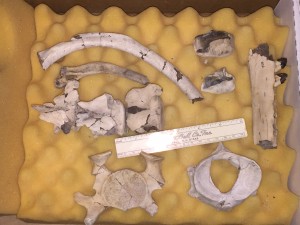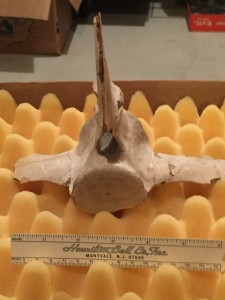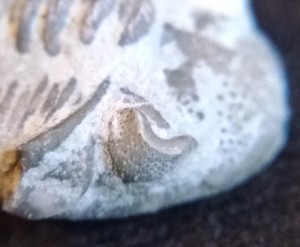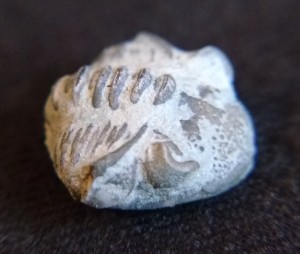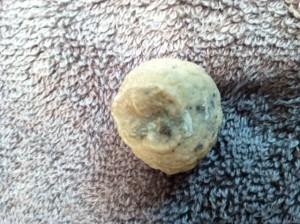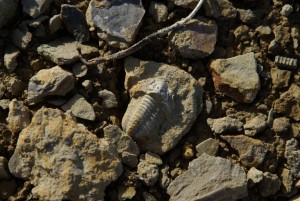Photo Gallery
- C. megalodon from the Pliocene of South Carolina.
- OLYMPUS DIGITAL CAMERA
- OLYMPUS DIGITAL CAMERA
- OLYMPUS DIGITAL CAMERA
- OLYMPUS DIGITAL CAMERA
- OLYMPUS DIGITAL CAMERA
- OLYMPUS DIGITAL CAMERA
- OLYMPUS DIGITAL CAMERA
- OLYMPUS DIGITAL CAMERA
- OLYMPUS DIGITAL CAMERA
- OLYMPUS DIGITAL CAMERA
- OLYMPUS DIGITAL CAMERA
- OLYMPUS DIGITAL CAMERA
- OLYMPUS DIGITAL CAMERA
- OLYMPUS DIGITAL CAMERA
- OLYMPUS DIGITAL CAMERA
- OLYMPUS DIGITAL CAMERA
- OLYMPUS DIGITAL CAMERA
- OLYMPUS DIGITAL CAMERA
- OLYMPUS DIGITAL CAMERA
- OLYMPUS DIGITAL CAMERA
- OLYMPUS DIGITAL CAMERA
- OLYMPUS DIGITAL CAMERA
- OLYMPUS DIGITAL CAMERA
- OLYMPUS DIGITAL CAMERA
- OLYMPUS DIGITAL CAMERA
- Holocystites cystoid specimen
- Holocystites with parasitic borings
- Complete theca (3.5 inches) of Triamara.
- OLYMPUS DIGITAL CAMERA
- OLYMPUS DIGITAL CAMERA
- OLYMPUS DIGITAL CAMERA
- OLYMPUS DIGITAL CAMERA
- Cincinnaticrinus sp.
- Specimen #1, side
- Specimen #2, bottom
- Specimen #8, bottom
- Specimen #8, top
- Specimen #11, bottom
- Specimen #11, top
- Ordovician trilobites from the St. Petersburg area of Russia.
- Amethyst and citrine cathedrals from Brazil.
- Holocystites theca from Silurian Massie Shale of Southeast Indiana.
- Pelecypod Internal Mold
- Cyclonema
- Gastropod Internal Mold
- Hebertella
- Hebertella “Geode”
- Rhynchotrema dentatum
- Cephalopod Internal Mold
- Caritodens
- Rhynchotrema dentatum
- Rafinesquina
- Vinlandostrophia latilirata
- Hebertella
- A mass burial layer of clam shrimp, tiny crustaceans with a protective shell. Each dimple represents an individual.
- A mass burial layer of “clam shrimp.” Each dimple represents an individual.
- This slab, perhaps once an ancient muddy shoreline, preserves around a dozen dinosaur footprints walking in different directions.
- A hot, humid day at the Solite.
- Looking down the rock that has already been excavated toward the insect and fish beds still being worked.
- Stinkin’ lava…Stone Mountain, NC, a Devonian granite monadnock.
- Hunting for Pliocene fossils in a cypress grove along the James River.
- Cystoid holdfast after being chiseled from the ground.
- Cystoid holdfast after making cuts around it with rock saw.
- Cystoid holdfast on hard ground.
- Stem with many parasitic bore holes.
- New ChB Squalodontoid molar
- New ChB Squalodontoid molar
- ChB Squalodontoid incisor
- ChB Squalodontoid pre-molar
- New ChB Squalodontoid jaw fragment
- ChB Squalodontoid teeth
- ChB Squalodontoid whale fossils
- ChB Squalodontoid whale lumbar vertebrae
- ChB Squalodontoid whale cervical vertebra
- ChB Squalodontoid whale lumbar vertebra
- A variety of the usual Liberty/Lower Whitewater fossils.
- An Ordovician waterfall
- Cystoid holdfast from hard ground of Massie Shale formation.
- A 2-inch Holocystites scutallatus specimen in matrix.
- IUPUC class examining Silurian Laural Limestone exposure.
- A popular stop in the quarry is a series of Ordovician sea stacks (the gray and purple rock) in the golden Silurian Brassfield Limestone; the sea stacks are now gone having been blasted away as mining continues.
- IUPUC class examining Silurian Brassfield Limestone (“golden” Brassfield).
- View of Ordovician (dark shale) in drainage ditch at bottom, with spoil pile of Silurian Massie Shale above.
- View of all 6 formations in the quarry from the brachiopod-rich Ordovician at the bottom to the Laural Limestone at the top.
- Exposure of Brassfield Limestone at New Point Stone Company, Ripley County, Indiana. (Height of exposure is approximately 3 meters.)
- Picture of conodonts (each specimen is about 1 mm in length)
- Picture of conodonts (each specimen is about 1 mm in length)
- Foulonia trilobite (Ordovician; 3.5 inches long) from Morocco.
- Enrolled Phacops (Devonian) from Morocco.
- Holocystites found during most recent trip to Massie Shale.
- Caryocrinites found on most recent trip to the Massie Shale.
- Cylindrical Holocystites species with many parasitic borings.
- Echinoderm stems with parasitic borings.
- Bottom view of Paulicystis showing the large circular attachment base.
- Side view of Paulicystis showing the squat mushroom-like shaped theca.
- Top view of Paulicystis showing the rectangular oral area.
- Enrolled Phacops (approximately the diameter of a quarter) from the Penn Dixie site.
- Prone Phacops (specimen is 2 inches in length) from the Penn Dixie site.
- Two and 1/4-inch Phacops collected during the 2017 Dig with the Experts.
- Holocystites specimen as found on the shale spoil piles.
- Caryocrinites after soaking in RockQuat.
- Ventrally exposed Spathacalymene nasuta. Note the red arrows: left one points to the snout and cheeks, right one points to a few exposed pleural tips.
- Large prepared Spathacalymene nasuta collected several years ago.
- Picture of some microscopic conodont tooth-like structures.
- Top-down view of Holocystites showing the pentagonal oral area (on right) and roundish anal opening (on left).
- Top-down view of Holocystites theca with oral cover plates in place (center of specimen); anal opening is on lower edge of specimen.
- Top-down view of Holocystites theca with anal pyramid in place (lower edge of specimen); oral opening is to the top.
- Large (3.5 inch) complete theca of Triamara.
- Figure 7. Partial Triamara theca with attached brachiole (see red arrows).
- Figure 7. Fragment of a cystoid (Triamara?) with attached brachiole.
- Two nearly complete 3-inch theca of an undescribed cystoid species. Oral area (mostly missing in both specimens) is to the left, the attachment base to the right.
- Figure 2. Top-down view of Holocystites showing the pentagonal oral area (on right) and roundish anal opening (on left). Note the small but very well preserved disk-like pore opening between the oral and anal areas — this is believed to have been involved in fluid flow into and out of the cystoid.
- Figure 3. Top-down view of 1-inch tall Holocystites theca with oral cover plates in place (center of specimen); anal opening is on lower edge of specimen.
- Figure 4. Top-down view of 1.5-inch tall Holocystites theca with anal pyramid in place (upper edge of specimen); pentagonal oral opening is to the bottom.
- Figure 7. Fragment of a cystoid (Triamara?) with attached 1-inch brachiole.
- Figure 1. Holocystites theca (2 inches tall) from Silurian Massie Shale of Southeast Indiana. Oral area is on top, attachment stalk is on the bottom.
- Figure 3. Top-down view of 1-inch tall Holocystites theca with oral cover plates in place (red arrow); the roundish anal opening is on the lower edge of the specimen.
- Figure 4. Top-down view of 1.5-inch tall Holocystites theca with anal pyramid in place (red arrow); the pentagonal oral opening is to the top of the specimen.
- Figure 7. Fragment of a cystoid (Triamara?) with attached 1-inch brachiole.
- Figure 1. Unidentified cystoid from the Silurian Massie Shale of SE Indiana. Note the rows of elongated hexagonal plates. Specimen is 1.5 inches tall.
- Figure 2. Top view of unidentified cystoid. The red arrows indicate the 5 brachiole attachment sites.
- Figure 3. Side view of Trematocystis theca. Note the relatively large hexagonal plates. Specimen is 1.25 inches tall.
- Figure 4. Top view of Trematocystis. The red arrows indicate the 4 brachiole attachment sites.
- Figure 5. Side view of cylindrical Holocystites. Note the relatively large hexagonal plates. Specimen is 2.5 inches long.
- Figure 1. Top view of unprepared Spathacalymene nasuta as found in the Silurian Massie Shale. Specimen is 2 inches long.
- Figure 2. Ventral view of trilobite in Figure 1, revealing the cheeks.
- Figure 3. Spathacalymene nasuta from the Silurian Massie Shale. Specimen is 2.25 inches long. Prepared by Ben Cooper.
- Figure 4. Calymene from Silurian Massie Shale. Specimen is 2 inches long. Prepared by Ben Cooper.
- Figure 5. Bumastus from Silurian Massie Shale. Specimen is 3.5 inches long. Prepared by Ben Cooper.
- Figure 6. Staurocephalus from Silurian Massie Shale. Specimen is 0.5 inch across. Found by Stan Hyne. Prepared by Scott Vergiels.
- Cups of Lyriocrinus melissa, Silurian, Waldron Shale, St. Paul, IN. The specimens are approximately 1.5 and 1 inch across. Note that the larger one has a short segment of stem still attached.
- Cups of Eucalyptocrinites crassus, Silurian, Waldron Shale, St. Paul, IN. The specimens are approximately 1.5 and 1 inch tall.
- Eucalyptocrinites crassus (Silurian, Waldron Shale, St. Paul, IN) with an intact “inner support cage.” Specimen is 2.75 inches tall.

